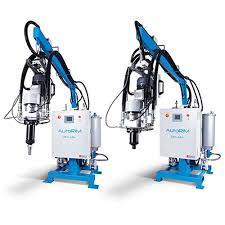
The Advancements in Polyurethane Technology
Polyurethane (PU) technology has been revolutionizing various industries with its versatile applications and exceptional properties. From construction and automotive to furniture and medical devices, PU has become a go-to material for manufacturers seeking durability, flexibility, and sustainability.
One of the key advantages of PU technology is its ability to be tailored to meet specific requirements. By adjusting the chemical composition and production processes, manufacturers can create PU products with varying hardness, elasticity, thermal insulation, and other desirable characteristics.
In the construction industry, PU foam is widely used for insulation purposes due to its excellent thermal resistance properties. This not only helps in reducing energy consumption but also contributes to creating more sustainable buildings.
In the automotive sector, PU materials are utilized in components such as seats, bumpers, and dashboards for their lightweight nature and impact resistance. These properties not only enhance vehicle performance but also improve occupant safety.
Furniture manufacturers appreciate PU technology for its versatility in creating comfortable yet durable seating options. Whether it’s soft foams for cushions or rigid foams for structural support, PU allows designers to achieve both aesthetics and functionality.
Furthermore, the medical industry benefits from PU technology through applications like prosthetics, wound dressings, and medical tubing. The biocompatibility of PU makes it an ideal choice for these sensitive medical devices that require skin contact or implantation.
As research and development in PU technology continue to progress, we can expect even more innovative applications in various industries. With a focus on sustainability and performance, polyurethane remains a driving force behind modern manufacturing practices.
Understanding PU Technology: Systems, Functions, Full Form, and Applications in Plastics
- What is PU systems?
- What is the work of PU?
- What is the full form of PU?
- What is PU plastic used for?
What is PU systems?
PU systems refer to the combination of polyol and isocyanate components that, when mixed together in specific ratios and under controlled conditions, undergo a chemical reaction to form polyurethane. These systems are designed to be versatile and customizable, allowing manufacturers to create a wide range of PU products with varying properties such as hardness, flexibility, and thermal insulation. By carefully selecting the types of polyols and isocyanates used in the system, as well as adjusting other additives and processing parameters, manufacturers can tailor the characteristics of the final polyurethane material to suit specific applications across industries like construction, automotive, furniture, and more.
What is the work of PU?
Polyurethane (PU) is a versatile material that serves a wide range of functions across different industries. The primary work of PU lies in its ability to provide durability, flexibility, and insulation properties in various applications. In construction, PU is commonly used for insulation purposes to enhance energy efficiency in buildings. In the automotive sector, PU components contribute to lightweight design and impact resistance for improved vehicle performance and safety. Additionally, PU finds its way into furniture manufacturing for creating comfortable seating options with long-lasting quality. Overall, the work of PU technology involves meeting specific requirements through tailored chemical compositions to deliver reliable and sustainable solutions in diverse fields.
What is the full form of PU?
Polyurethane is commonly abbreviated as PU, with the full form being “polyurethane.” Polyurethane is a versatile polymer compound that is known for its wide range of applications across industries such as construction, automotive, furniture, and healthcare. Its unique properties make it a preferred choice for manufacturers seeking materials that offer durability, flexibility, and performance. The abbreviation “PU” simplifies the term “polyurethane” and is widely recognized in technical discussions and product labeling within the industry.
What is PU plastic used for?
Polyurethane (PU) plastic is used for a wide range of applications across industries due to its versatility and exceptional properties. PU plastic is commonly utilized in the production of furniture, automotive components, footwear, coatings, adhesives, sealants, and insulation materials. In furniture manufacturing, PU plastic is favored for its durability, comfort, and aesthetic appeal in items such as sofas, chairs, and mattresses. In the automotive sector, PU plastic finds its place in interior components like dashboards and seats due to its lightweight nature and impact resistance. Additionally, PU plastic is extensively used in the footwear industry for creating comfortable and durable shoe soles. Its versatility also extends to applications such as protective coatings, flexible adhesives, weather-resistant sealants, and thermal insulation materials. The adaptability of PU plastic makes it a sought-after material for various products that require a combination of strength, flexibility, and longevity.
